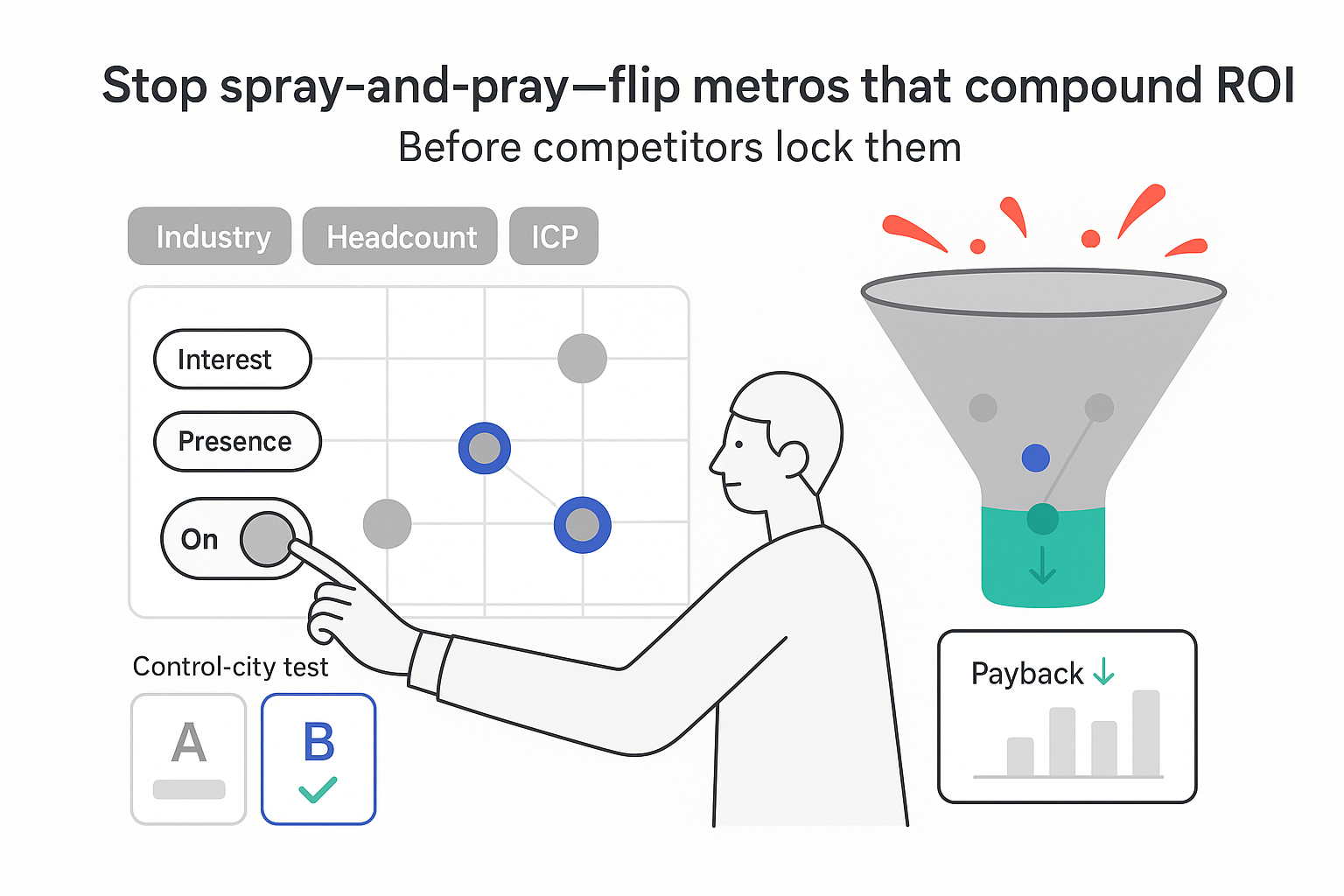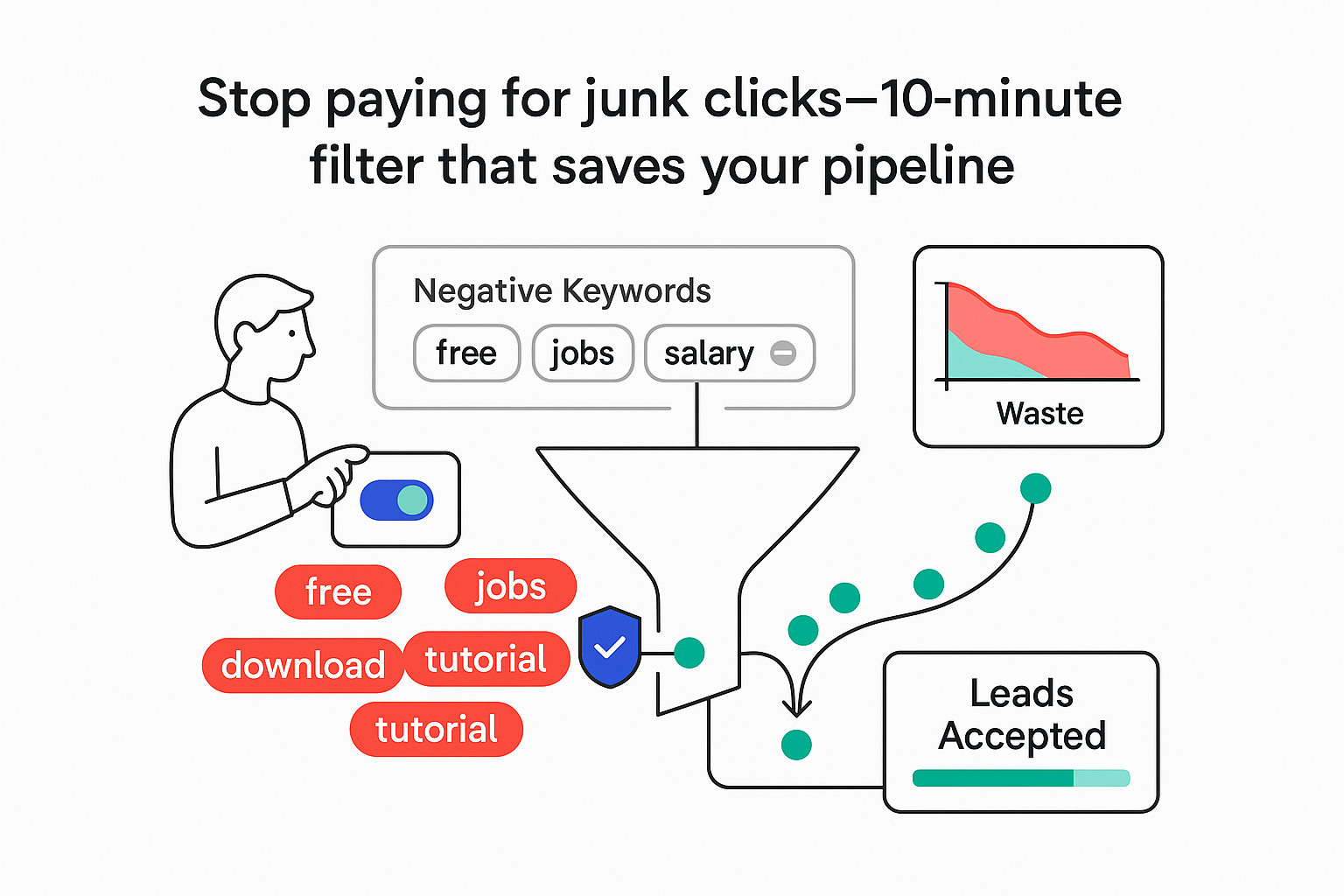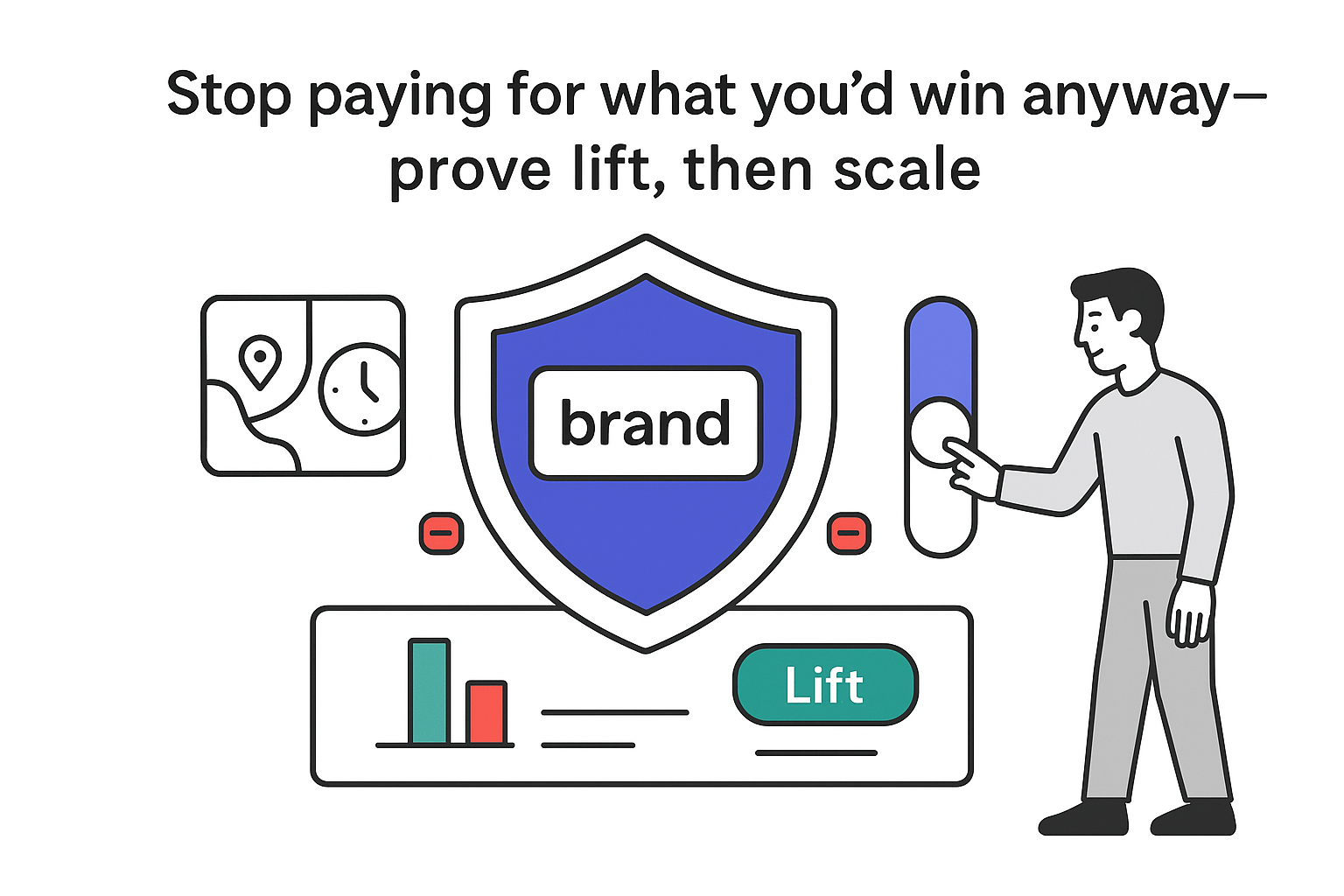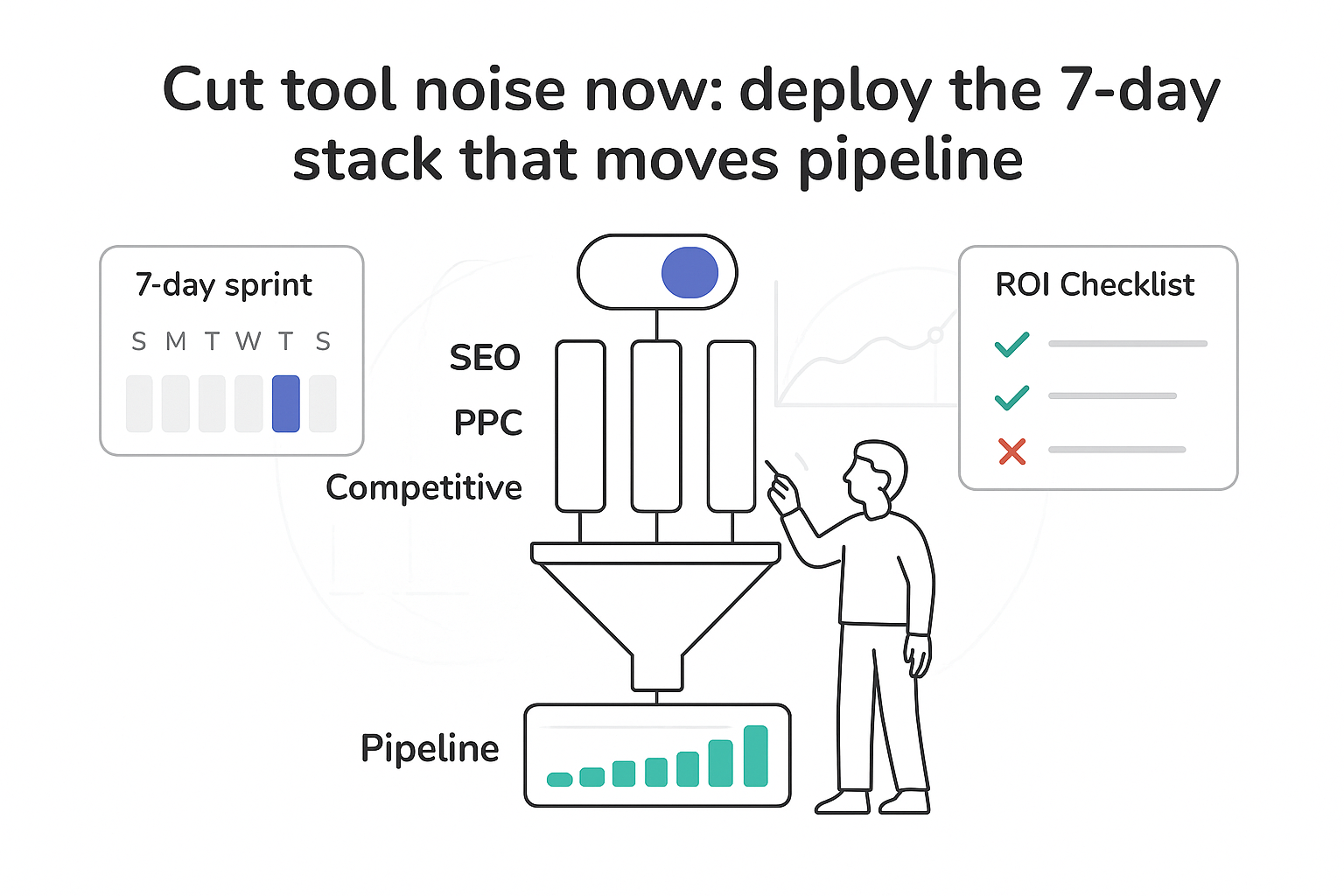Seasonal windows can lift pipeline without blowing up the cost base. If I run a service business and care about profit per lead, that matters. A seasonal marketing campaign done right lines up with how B2B buyers plan budgets, refresh vendor lists, and attend industry events. I expect faster engagement on email, stronger click through on retargeting, and a steady uptick in inbound inquiries within weeks. SEO plays take longer, then compound. The goal is simple: be visible at the exact moments when buyers have attention and intent. It is a seasonal opportunity to capitalize on.
Seasonal marketing for B2B services
I start with outcomes, because that is what I manage. For most B2B services, a well-planned seasonal campaign can lift qualified pipeline by roughly 15 to 35 percent over a 60 to 120 day window when timing aligns with budget cycles and project kickoffs. That does not mean instant revenue - longer sales cycles still apply - but earlier signals show up: more senior replies, higher meeting acceptance, and bigger average deal sizes. Actual lift depends on baseline quality, channel health, and sales follow-through.
Timelines by channel tend to look like this. Email and paid retargeting can drive meetings in the first one to two weeks. LinkedIn thought leadership and PR expand reach within two to four weeks. SEO-led content typically needs six to twelve weeks to climb, then keeps paying back. If I tie in a webinar or event, I expect a surge in sign-ups during the final ten days before the date, then a second wave of on-demand views in the two weeks after.
Quick, low-risk levers I reach for
- Refresh two to three top-performing pages with seasonal angles, FAQs, and a case study tied to the moment.
- Introduce a time-bound diagnostic or blueprint session with a clear cap on seats.
- Retarget warm visitors with case study clips and short authority posts on LinkedIn.
- Reawaken old MQLs with a friendly, value-first sequence tied to the season.
- Coordinate a partner co-promotion that extends reach with a joint session.
Pitfalls to avoid
- Overreliance on discounts that train buyers to wait. Add value instead of cutting price.
- Generic holiday content that says nothing new. Tie messaging to real deadlines and outcomes.
- Weak alignment with sales. If SDRs and AEs do not know the angle, momentum dies.
- Ignoring delivery capacity. A flood of new projects means nothing if onboarding slips.
A practical campaign plan
I use a simple five-part plan that does not require micromanaging every task.
1. Choose seasonal opportunities
Pick moments where ideal clients already have reason to act: fiscal year end, budget resets, conference season, tax deadlines, RFP spikes, platform sunsets, or new regulations. Rank by fit, buyer urgency, and my ability to add clear value.
2. Set goals and KPIs
Define the goal for the seasonal push - new SQLs from target accounts, expansion meetings with current clients, or sourced pipeline from inbound. Make it measurable: e.g., 30 SQLs from tier one accounts, a 20 percent lift in demo requests, or a 10 percent drop in CAC over the quarter. Match KPIs to the motion: pipeline created, meetings booked, ACV, win rate, and sales cycle days usually trump vanity traffic.
3. Map milestones on a calendar
Work back from the date. Content briefs and design two to six weeks out, pre-launch teasers one to two weeks out, and final pushes in the last ten days. Include holidays and industry events across US, UK, CA, and AU so sends land on the right days. Add reminders for enablement, approvals, QA, and legal review if needed. A marketing calendar keeps timing tight.
4. Organize assets and workbacks
Centralize messaging, creative, and tracking. Store channel specs and variations in one place with source files ready for fast edits. Write enablement notes for sales that mirror the landing page. Set UTMs and naming conventions before launch so reporting is clean. If you need scaffolding, use these content marketing planning templates.
5. Define reporting and agility loops
Set a weekly review for leading signals, then a biweekly decision checkpoint. If CTR or meeting acceptance rates are above target, extend dates or expand reach. If reply rates sag, shift headline angles, swap offers, or pivot the audience segment. Small changes early prevent wasted weeks.
A 90-day arc that usually works
- Days 1 to 10: Research, briefs, persona review, draft assets, sales enablement
- Days 11 to 30: Content production, landing pages, email builds, retargeting creative
- Days 31 to 45: Pre-launch teasers, partner alignment, final QA
- Days 46 to 60: Launch window with two to three waves across channels
- Days 61 to 90: Post-launch nurture, follow-ups, content repurposing, insights readout
Budget guidance I use as a starting point
- 40 to 50 percent to content and SEO if organic is underbuilt
- 20 to 30 percent to paid retargeting and limited demand bursts
- 10 to 20 percent to webinars, events, and partner activities
- 10 percent to creative testing and data cleanup
Strategy by stage of the buyer journey
B2B decisions move through stages. I map channel mix to that journey so each touch has a job.
Awareness
- SEO-led content on seasonal topics, original data posts, and quick video explainers
- LinkedIn thought leadership from founders and SMEs, plus PR placements where relevant
Consideration
- Webinars or live Q&A sessions tied to deadlines or industry changes
- Case studies framed around the season, comparison pages, and ROI explainers
- Retargeting with problem-solution clips and snackable proof
Decision
- Time-bound audits or strategy workshops
- Small paid pilots with a clear off-ramp
- One-pagers for procurement and IT that speed approvals
Execution cadence
- Pre-launch: Update cornerstone pages with seasonal copy and FAQs; warm audiences with short posts and teasers; brief SDRs with message scripts and objection handles.
- Launch: Two email waves to segmented lists with tight subject lines; a LinkedIn post series (some text-only, some short videos); retargeting that rotates creative every seven to ten days; a partner session or AMA to borrow reach.
- Post-launch: Thank-you follow-ups, on-demand content, and short surveys; nurtures that lead to a deeper consult or pilot; repurpose into posts, clips, and sales slides.
Smart audience segmentation and ABM alignment
Seasonal work shines when it speaks to a real person at a real company with a real deadline. I segment by ICP shape, firmographics, buying stage, and account tier.
Core cuts that usually pay off
- ICP and firmographics: industry, employee count, tech stack, and region
- Tiered accounts: tier one strategic logos, tier two growth accounts, tier three long tail
- Buying stage: awareness, in-market, open opportunity, customer expansion
Simple personalization rules
- Offers: audits for tier one, guided templates for tier two, best-practice guides for tier three
- Angles: risk mitigation for regulated industries, speed to value for startups, cost control for mid-market
- Timing: respect regional holidays, end-of-month blackout dates, and finance calendar quirks
ABM alignment with sales
- Share a concise battlecard per segment
- Agree on meeting criteria and handoff rules
- Trigger a two-touch follow-up from SDRs within 24 hours of high-intent actions
Seasonal hooks I have seen resonate
- An operations-focused CFO at a SaaS firm nearing fiscal year end: focus on cost recovery before budgets close.
- An IT director at a healthcare group prepping for a compliance update: focus on readiness checks and a two-week implementation plan.
- An agency founder heading into conference season: focus on partner enablement and converting event leads to pipeline.
Seasonal ideas and building real urgency
I do not need a flashy gimmick. I need offers that make action feel safe and smart.
Ideas that fit B2B services
- Limited-time bundles pairing a kickoff workshop with a quarter of advisory support at a fixed fee
- Value-add bonuses like a data cleanup, a QA sprint, or a training block instead of price cuts
- Philanthropic tie-ins: donate to an industry scholarship during graduation season or match donations during giving season - authentic and transparent
- Partner co-marketing: share a stage with a complementary vendor, or co-sponsor a research angle when agreements allow
- Event-driven offers aligned with conference spikes, product sunset dates, or tax deadlines; be explicit about what changes this month versus next
Make urgency feel real, not pushy
- Cap seats on workshops and show how many remain
- Use short windows on bonuses rather than sitewide discounts
- Add a simple countdown on landing pages
- Share cut-off dates tied to fiscal or regulatory calendars
Planning around holidays and micro-seasons
I think beyond major holidays. The calendar is full of micro seasons that matter more in B2B.
Moments worth planning around
- Fiscal year end and budget refresh periods by region
- Peak RFP windows when procurement is active
- Tax season, audits, and compliance deadlines
- Back-to-school periods as training and certification moments
- Summer slowdowns that favor strategy work and platform migrations
- Conference seasons by industry (e.g., Q2 for tech, Q3 for healthcare)
Localization notes
- Check public holidays in the US, UK, CA, and AU so campaigns do not land on days off
- Adapt phrasing and spellings per region
- Review compliance for data privacy, financial claims, and sector rules
- Be careful with cultural references; when in doubt, lean on neutral themes like planning, growth, or learning
Analytics, AI, and decision rules that keep you honest
I make numbers tell a clear story. Decide north stars, watch leading signals, and set rules for when to change course.
Core KPIs for B2B services
- Pipeline created and sourced by channel
- SQLs and meetings from target accounts
- ACV, win rate, and sales cycle days
- CAC and payback period
- Content-assisted conversions and view-through for retargeting
Attribution without complexity
- Use UTM standards and consistent naming so source data is clean
- Pick a primary model (position-based works well), then sanity-check with first-touch and last-touch views
- Track assist rates for content and retargeting since they often set up the win
Reporting cadence and decision thresholds
- Weekly: leading indicators like CTR, reply rate, meeting acceptance, and CPC
- Biweekly: SQL volume, pipeline by segment, and creative performance by variant
- Monthly: ACV, win rate movement, CAC, and payback trends
Simple action rules I rely on
- If CTR or reply rates beat target by 20 percent for a week, increase budget by up to 30 percent
- If SQLs from tier one accounts miss target for two weeks, shift spend to the best-performing segment and test a new angle
- If meetings stall post-launch, add a new offer variant or introduce partner programming
Sanity-check ROI math
Inputs: spend, average CPL, SQL rate, win rate, ACV, and payback target
Example: Spend 40,000 on a seasonal campaign. CPL 200 gives 200 leads. SQL rate 20 percent yields 40 SQLs. Win rate 20 percent yields 8 deals. At 25,000 ACV, that is 200,000 in new ARR. CAC is 5,000 per deal. Payback is about 2.4 months if gross margin is strong. Adjust to your actuals.
SEO-led seasonal gains timeline
- Weeks 1 to 2: update existing pages, publish two to three new seasonal posts, tighten internal linking
- Weeks 3 to 6: early traffic lift on refreshed pages; retargeting clicks rise
- Weeks 6 to 10: rankings settle; organic leads climb; case studies start to pull
- Weeks 10 to 16: compounding effects; content drives steady pipeline even after the seasonal peak
Practical AI uses with guardrails
- Predictive topic selection using search trends and CRM notes to spot seasonal themes that convert (tools like Ahrefs help with keyword demand and competitor gaps)
- First-pass content briefs, then SME refinement to preserve voice and accuracy
- Asset versioning to spin out channel-ready variants without hours of manual edits (try HubSpot's Campaign Assistant to accelerate drafts)
- Send-time and creative testing to rotate headlines and images and learn quickly
- Post-campaign insights that summarize winning angles, objections, and overperforming segments
- Guardrails: lock voice and naming rules; route final copy through approvals; avoid feeding sensitive client data to public systems; keep a human in the loop for claims, numbers, and any high-stakes statement
One last thought. Seasonal marketing rewards teams that plan early, keep messages tight, and act on data without drama. I do not need fireworks. I need timing, clarity, and a steady hand. That is how a seasonal push turns into real pipeline, not just a blip in traffic.







.svg)